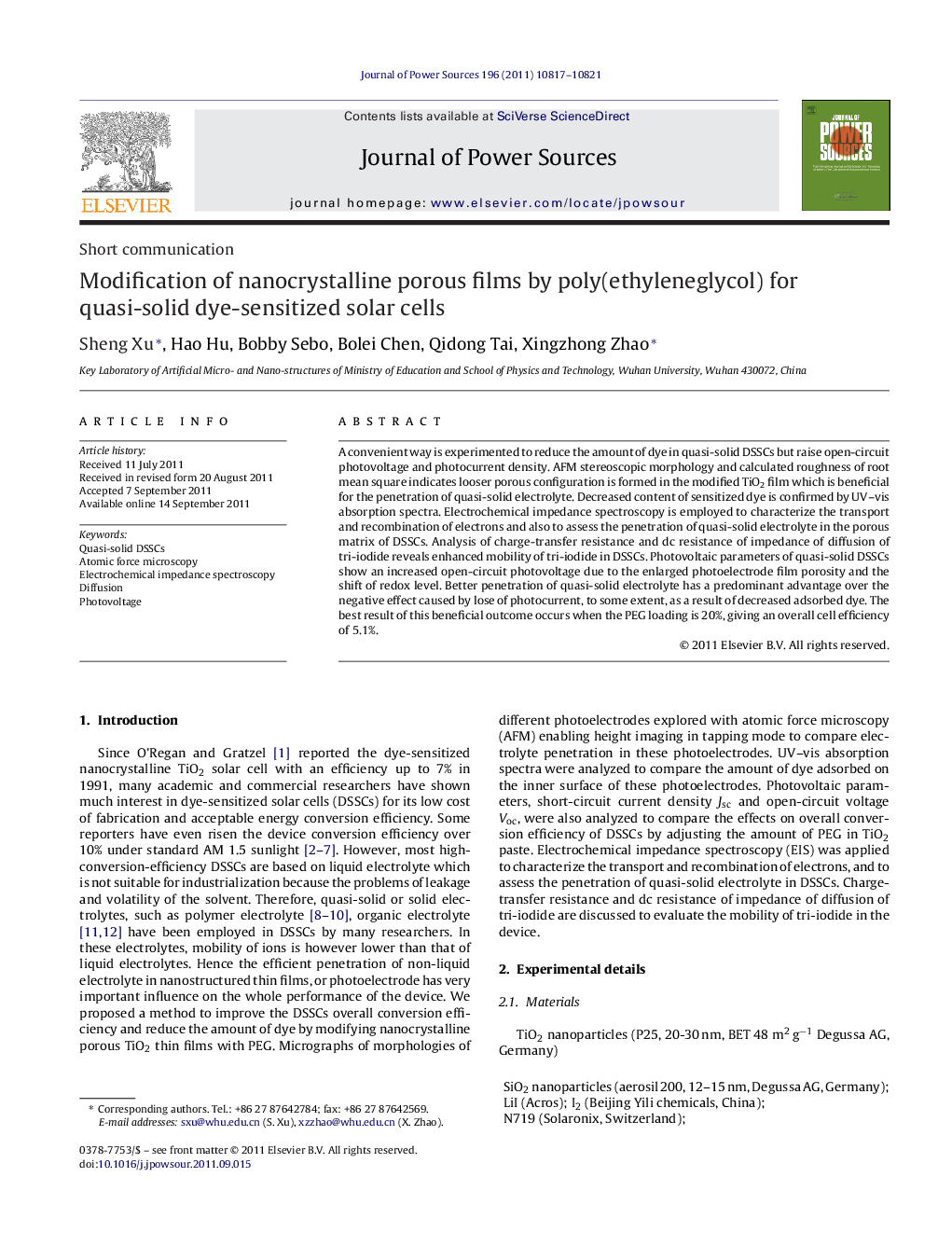| Article ID | Journal | Published Year | Pages | File Type |
|---|---|---|---|---|
| 1293283 | Journal of Power Sources | 2011 | 5 Pages |
A convenient way is experimented to reduce the amount of dye in quasi-solid DSSCs but raise open-circuit photovoltage and photocurrent density. AFM stereoscopic morphology and calculated roughness of root mean square indicates looser porous configuration is formed in the modified TiO2 film which is beneficial for the penetration of quasi-solid electrolyte. Decreased content of sensitized dye is confirmed by UV–vis absorption spectra. Electrochemical impedance spectroscopy is employed to characterize the transport and recombination of electrons and also to assess the penetration of quasi-solid electrolyte in the porous matrix of DSSCs. Analysis of charge-transfer resistance and dc resistance of impedance of diffusion of tri-iodide reveals enhanced mobility of tri-iodide in DSSCs. Photovoltaic parameters of quasi-solid DSSCs show an increased open-circuit photovoltage due to the enlarged photoelectrode film porosity and the shift of redox level. Better penetration of quasi-solid electrolyte has a predominant advantage over the negative effect caused by lose of photocurrent, to some extent, as a result of decreased adsorbed dye. The best result of this beneficial outcome occurs when the PEG loading is 20%, giving an overall cell efficiency of 5.1%.
► We demonstrated a convenient method of adding PEG in TiO2 paste to reduce the amount of dye in DSSCs but raise the open-circuit photovoltage and the photocurrent density. ► The photoelectrode form looser porous configuration which is benefitial for the penetration of electrolyte. ► The amount of dye decreased directly as the amount of PEG increased in the TiO2 paste. ► EIS indicates enhanced mobility of tri-iodide in the DSSCs. ► Raised open-circuit photovoltage is caused by enlarged photoelectrode film porosity and the shift of redox level.
